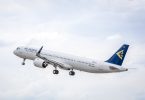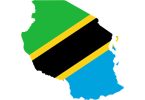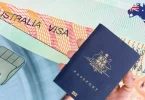NEW YORK, NY – Few industries are hit as hard by high oil prices than the airlines, which can spend close to 40% of their budget on fuel.
With jet fuel prices near record highs, the drive to conserve is stronger than ever.
Delta recently made headlines with its novel bid to buy an oil refinery, taking a more direct role in procuring fuel. But Delta and other airlines are experimenting with a number of other ways to cut costs.
The entire industry is hoping a switch from radar to GPS-based navigation will cut the time it takes both to reach cruising altitude and land a plane.
A Delta spokesman said GPS systems can get a plane on the ground 2 or 3 minutes faster than radar by allowing the plane to descend in one fell swoop instead of a series of steps. Since the planes burn about $100 minute in fuel, that can shave a few hundred dollars off of each landing.
A few hundred dollars may not sound like much, especially since Delta spent $12 billion last year on fuel. But considering Delta lands over 1,000 planes a day in Atlanta alone, the savings can add up fast.
The airline also cut long-haul flights by around 10% last year, and plans another 10% reduction this year.
Long-haul flights burn more fuel per mile than short trips because extra weight is added by the extra fuel needed to make the trip.
Delta’s risky oil refinery bet
“Fuel is expensive, so we’re being very careful about where we fly,” said Delta spokesman Eric Torbenson, adding that Delta is making sure all its routes can cover the cost of fuel.
Delta is also replacing 88 of its 50-seat regional jets with larger, 100-passenger versions, because the larger jets get better mileage per passenger.
At United, replacing aircraft is also part of the strategy.
United is putting 19 of the most advanced 737’s into service this year, as well as five of Boeing’s new ultra-efficient 787 Dreamliners. The new aircraft are 15% to 20% more efficient than the planes they will replace.
Like other airlines, United has put winglets on the tips of many of its aircraft’s wings, which reduce drag and can cut fuel use by up to 5%.
It’s also swapping out parts, such as the 800-pound steel brakes on some 737’s with lighter, carbon-fiber equipment.
“We have a long-term approach in place,” said Joel Booth, who flew 777’s for United before taking a job as the airline’s head of fuel efficiency. “This is very important to our businesses.”
Booth said that efficiency efforts last year saved the airline 60 million gallons of fuel – or nearly $200 million at today’s prices. In 2011 the airline spent nearly $13 billion on fuel.
United’s overhaul also extends beyond its aircraft.
The company has over 3,600 ground support vehicles such as baggage tractors and aircraft tugs that run on either alternative fuel or electricity — a move being made by other airlines too.
Southwest extends its cost savings strategy beyond the airport entirely.
Like most airlines, Southwest engages in extensive hedging for its fuel — a practice where the airline basically bets fuel prices will be higher in the future and locks in contracts with Wall Street traders and others willing to take the opposite side of that bet.
The airline received considerable attention in 2007-2008 when it was hedged more so than most airlines when oil prices spiked — a strategy that paid off handsomely.
Over the last decade or so Southwest’s trading strategy has saved over $3 billion in fuel costs, said Chris Monroe, the airline’s head of risk management.
Currently Southwest, which spent $6 billion on fuel last year, has hedges out to 2015. But the airline is basically unhedged through the first half of this year, meaning it thinks fuel prices will continue falling for at least another month.






















